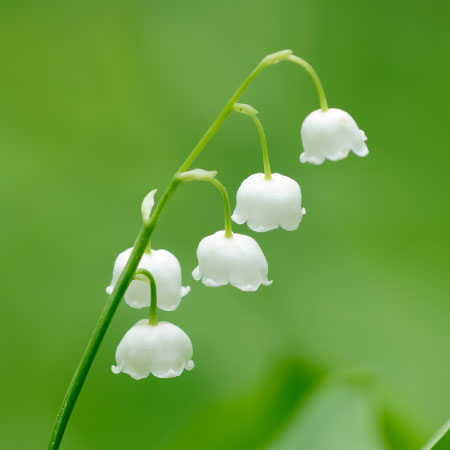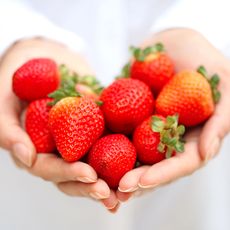Q&A with Nan Chase, Author of "Eat Your Yard"

Nan Chase spent her formative years in central and southern California. Much of Eat Your Yard! was inspired by her backyard, which contained an almond tree, a peach tree, two different plum trees, huge rosemary bushes, kumquat bushes, and some strawberries. The tiny front yard had a persimmon tree and roses. Later, living in the South, she got into the culture of canning and putting up food, winemaking, and herbalism with the native plants. Bliss all around. By profession she is a writer, currently doing public relations and loving it. Nan's latest release, "Eat Your Yard", has information on 35 edible plants that offer the best of both landscape and culinary uses. Edible plants provide spring blossoms, colorful fruit and flowers, lush greenery, fall foliage, and beautiful structure, but they also offer fruits, nuts, and seeds that you can eat, cook, and preserve. Read on for more information about this book and find out how to WIN ONE OF THREE COPIES from Gibbs Smith!
1. Why should we choose to landscape with edibles?
Well, why not? And let's throw "drinkables" into the mix [I am co-author, with DeNeice C. Guest, of Drink the Harvest]. So often I think people concentrate on the "edible" of edible landscaping, whereas I always think first of the "landscaping" part. I am sure that much of that orientation comes from my childhood in California, where I got to know landscapes wild and intensely groomed. For the last 35 years I have lived in western North Carolina, which is a botanically rich region with many beautiful landscape plants that also supply nutrition or other gustatory pleasure. 2. How does your book help the reader develop an edible yard that offers the best of both landscape and culinary uses? Eat Your Yard! embodies my criteria for a beautiful edible, drinkable landscape: Is a plant beautiful two, three, or four seasons of the year? And does it produce something both for eating fresh and to preserve in some way - canning, dehydrating, fermenting, pickling. So, I don't consider such vegetables as tomatoes and squash part of the edible landscape, as they have no landscape value. 3. There are 35 plants featured in your book ranging from the ordinary to the exotic. Why did you choose these 35 plants and what are some plants that you wish had made that cut? First, I wish serviceberry had made the cut. Serviceberry should be in there, but I didn't even learn about serviceberries until just about the time the book was finished...and then discovered a row of mature serviceberry bushes growing across the street from my new house. Also called June bush or shad bush, serviceberry has outstanding landscape value in several seasons, and eventually produces loads of edible juicing berries. Yum. I also would like to have strawberries in, as a well cared for strawberry bed can be a knockout; strawberry wine is the best one I make. Now, as to my choices. At the time I wrote Eat Your Yard! I had been gardening in the mountains of western North Carolina for about 20 years, and had learned so much from wise gardeners around me and from the exquisitely layered natural environment. It turned out that I had at least tried growing most of them, not all, but enough to have a good feel for the characteristics of various regional landscape plants: wildflowers of all sorts, flowering and fruiting shrubs, and fruiting trees. I knew the plants that I had grown myself are cold-hardy, so I feel comfortable recommending them to gardeners in harsh climates. And I wanted to include some plants that only grow in hot regions. My California background influenced my choices, as I had known so many in my own yard as a child. 4. One unique feature of your book is the inclusion of recipes, which makes it much more than just a landscaping guide. What was the impetus for including the recipes and which one is your personal favorite? I included recipes because I wanted the book to be not just a How To guide, but a Why To guide. Why To grow a whole lot of new and interesting landscape plants. And recipes for great and unexpected concoctions seemed like the best way to make the case. As to a favorite, I have to say that I have sentimental reasons for liking the recipe for Mint Wine the best. That's because it was the first time I had tried making wine at home, I did everything wrong but somehow it came out fantastic. That accidental success gave me the confidence to keep going with garden wines, and today, making wines and meads and ciders from the garden (and urban harvesting) has become a major hobby. 5. What advice do you have for those interested in pursuing edible landscaping? How do you begin the task of establishing your edible landscape? That's such a good question. Look at the parallel timelines: it takes herbs about ten minutes to get established in the garden. It takes a couple of months for herbs and greens and vegetables to produce, and a year or two for berries and rhubarb and such. And it takes some years for fruiting shrubs and trees to start bearing fruit. So plant some of each. Yes, plant fruit trees and vines right away, even if it's for a rental (you are leaving the world a better place, for not much money). And plant herbs right away so you can start using them for dinner. Then, as time allows, fill in the spaces with the rest. And don't forget to plant flowers too, for eye candy and for the birds and bugs. 6. What's in your garden? Artichokes, bay tree, cilantro, daikon....do you begin to see the A to Z of it? In fact I am "farming" two urban plots now, a 9/100 acre (that's 3,900 square feet for the lot) lot where I live, and a further .18 acre with a studio on it close by in the neighborhood. My prize fruit trees are my Callaway crabapple trees. The two oldest have produced as much as 90 pounds of fruit together in a year; I harvest it and crush it for an amazing crabapple cider. Roses are important, beautiful, of course, but also pollinator magnets. And rose petals and rose hips alike go into various foods and beverages. Traditional roses, not the fussy hybrid tea roses, are so easy to grow. Herbs include mostly perennials, planted in beds near the front door - rosemary, bronze fennel, green fennel, parsley, sage, thymes, tarragon, lemon mint, and on and on. It's a wonderland, as I also use grape vines to screen the porch, and that gives the place a Victorian feel. The pawpaw tree has started bearing fruit, and I am planting persimmon trees. Rhubarb is highly ornamental on walls, and so is yucca. As far as vegetable gardening, I stick to cold-hardy plants and let farmers grow the rest. So I rely on onion family tucked everywhere, including leeks, shallots, garlic, and onions. Lots of greens as circular beds among the flowers.
| WIN ONE OF THREE COPIES OF Eat Your Yard!To enter, simply leave a comment on this blog post by midnight on Thursday, August 25, 2016 (be sure to provide a valid e-mail address) in answer to the following question:What would you plant in your edible yard?Be sure to include a valid e-mail address. The winner will be drawn at random from all qualified entrants, and notified via e-mail. (See Rules for more information.) |
UPDATE 9/16/16: Congratulations to Ilene Marsch, Pat Harrison and Catherine Carmel!
Gardening tips, videos, info and more delivered right to your inbox!
Sign up for the Gardening Know How newsletter today and receive a free copy of our e-book "How to Grow Delicious Tomatoes".

Shelley Pierce was a writer for Gardening Know How, contributing to hundreds of articles for the site.
-
 How To Grow Strawberries From A Strawberry: All You Need To Cultivate Yummy Fruits
How To Grow Strawberries From A Strawberry: All You Need To Cultivate Yummy FruitsYou may know how to grow strawberries from small plants or runners – but what about growing from the fruit? Here we show you how to grow strawberries from a strawberry
By Mary Ellen Ellis
-
 Best Tomatoes For Containers: 10 Tastiest Varieties For Plentiful Produce In Compact Areas
Best Tomatoes For Containers: 10 Tastiest Varieties For Plentiful Produce In Compact AreasThese are the best tomatoes for containers that prove you don't need to have a large space or elaborate garden to grow delicious produce.
By Bonnie L. Grant